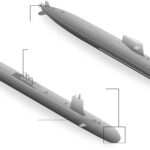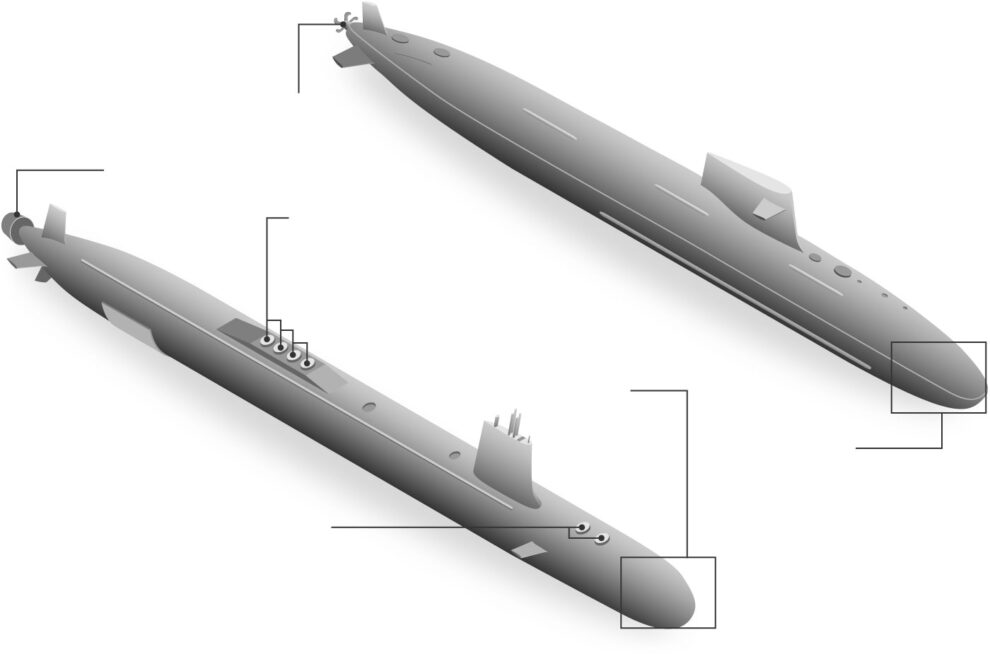As geopolitical tensions escalate and China’s naval capabilities continue to grow, the U.S. Navy finds itself facing mounting challenges to its once-unquestioned dominance at sea. Historically, the U.S. maintained a clear advantage, but that edge is now being steadily undermined—not only by China but also by other rising competitors, both in terms of fleet size and technological sophistication.

One of the most glaring disparities between the U.S. and China is in shipbuilding capacity. For years, experts have been raising the alarm about this growing gap. Chinese shipyards now outpace America’s by an astonishing 232-to-1 ratio. This discrepancy isn’t limited to surface ships—an area where China’s rapid expansion has been well documented—but extends to submarines, a critical asset for maintaining naval superiority. U.S. shipbuilders are struggling to keep up, and this is where the real threat lies.
China’s shipbuilding power isn’t just about quantity—it’s also about speed and innovation. While the U.S. has prided itself on advanced naval technologies, China is quickly narrowing that gap, producing not only more ships but also increasingly sophisticated ones. The urgency to address this gap is palpable, especially as China’s ambitions continue to grow in regions like the South China Sea, where naval dominance directly translates to geopolitical influence.

Retired U.S. Navy Captain Jerry Hendrix has been vocal about another pressing issue: the slowing pace of U.S. submarine production. “Submarine production has dropped from two per year to just over one,” Hendrix remarked, emphasizing that this comes at a time when production should be accelerating. The Navy’s 30-year shipbuilding plan calls for three fast-attack submarines and one ballistic missile submarine annually, a pace far from being met. This production shortfall is occurring just as global threats are becoming more complex, making the need to bolster the U.S. submarine fleet even more urgent.
Submarines are one of the Navy’s most strategic assets. They operate with stealth, making them essential for surveillance, deterrence, and combat operations. Falling behind in submarine production could leave the U.S. vulnerable in future conflicts, particularly in contested regions where control of undersea domains could determine the outcome.
Even more concerning is the lack of sufficient dry docks to maintain the current submarine fleet. According to Hendrix, all ten dry docks at naval shipyards and three at commercial facilities are operating at full capacity. This bottleneck is causing delays in essential maintenance, further compounding the issue. As a result, submarines are spending more time waiting for repairs than patrolling the seas.

Maintenance delays are more than just an inconvenience; they’re a national security risk. A submarine sitting idle is a submarine that isn’t prepared to respond to crises or engage in deterrent missions. The strain on the system is reaching a critical point, and without immediate investments to expand maintenance capacity, the readiness of the U.S. Navy could be severely compromised.
These problems are occurring amid broader concerns about the U.S. submarine program. In September, Representative Ken Calvert called the situation a “crisis,” citing a staggering $17 billion budget overrun and construction delays of up to three years in key submarine programs. “Without significant intervention, I have zero confidence that Navy shipbuilding will get back on track,” Calvert warned, expressing frustration with the Navy’s leadership for not being transparent about the scope of the challenges. According to Calvert, the Navy’s plans to fix the problem are, at best, “aspirational”—a concerning assessment given the gravity of the situation.
Calvert’s concerns echo those of other lawmakers, defense officials, and military analysts who have expressed similar apprehensions about the state of America’s submarine capabilities. Many are calling for a more aggressive approach to reforming the shipbuilding process and ensuring that budget overruns and delays don’t continue to hinder critical defense programs.

As the U.S. struggles to address these challenges, its competitors are making significant strides. Both China and Russia have been modernizing their submarine fleets, investing heavily in next-generation warships that could alter the balance of power in the coming decades. For China, this is part of a broader strategy to project power beyond its immediate region, particularly in areas like the Indo-Pacific, where U.S. naval presence has historically been dominant.
Russia, despite facing broader economic challenges, continues to prioritize submarine development as a key military sector. Submarines are one of the few areas where Russia retains global leadership, and Moscow’s investment in advanced submarine technologies underscores the strategic importance of these vessels in future conflicts. Even with its declining economy, Russia understands that submarines will play a critical role in any great power confrontation.
As the global naval landscape becomes more competitive, the U.S. faces significant strategic vulnerabilities. Submarine shortfalls, combined with maintenance bottlenecks and shipbuilding delays, are creating a situation where America’s naval dominance could fade in the coming years. Without urgent action to address these issues, the U.S. risks being unprepared for the maritime challenges that lie ahead, particularly in regions like the South China Sea and the Arctic, where control over key waterways could determine the future balance of power.

To address these growing challenges, the U.S. Navy will need more than just increased shipbuilding capacity—it will require a holistic overhaul of its naval strategy. One area that deserves more attention is unmanned and autonomous underwater vehicles [UUVs]. These cutting-edge systems could supplement the existing submarine fleet, providing additional surveillance and combat capabilities without the same production and maintenance constraints.
Additionally, closer partnerships with allied nations, such as Australia, Japan, and NATO members, could help distribute the burden of maintaining a strong naval presence in key regions. Joint submarine development programs, shared technological innovations, and coordinated patrols could serve as force multipliers, ensuring that the U.S. and its allies can collectively counter rising naval threats.
Ultimately, the U.S. must prioritize investment in both traditional shipbuilding and new, disruptive technologies if it hopes to maintain its naval dominance in the 21st century. The challenges are immense, but so too are the stakes.















